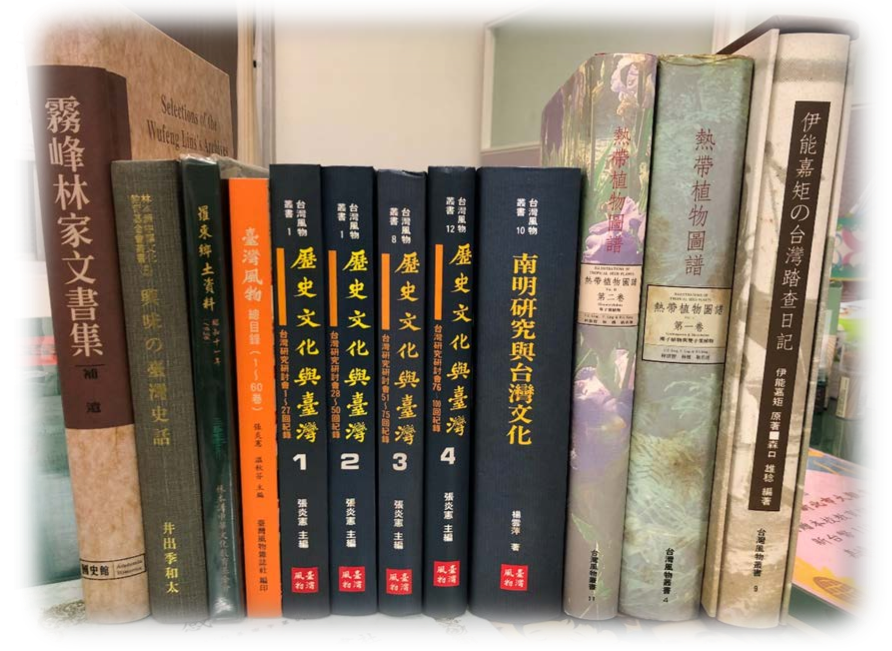 從日本時代始政紀念日談起
從日本時代始政紀念日談起
Japanese-era “Dominion Day”
蔡錦堂/Tsai Chin-tang
(淡江大學歷史系副教授)
(Associate Professor, Tamkang University Department of History)
2001-06-18
從1895年至1945年的五十年間,每年的6月17日在台灣本土境內皆舉行盛大儀式,以紀念這個日本治台開始的日子,此即始政紀念日。由始政紀念日所留下來的歷任台灣總督發表的感言或史料,我們得以知悉當時日本統治台灣的種種情況;而這個日子正是台灣與中國分道揚鑣的開始。本週「台灣歷史之窗」特別邀請淡江大學歷史系副教授蔡錦堂執筆,針對日本在台統治五十年的施政與其影響作深入探討。
During the 50-year period from 1895 to 1945, grand ceremonies were held in Taiwan every June 17 to commemorate the commencement of Japanese rule over the island. Based on the June 17 “Dominion Day” celebratory addresses delivered by successive Japanese Viceroys to Taiwan together with other historical documents, we may familiarize ourselves with the conditions of Japanese rule prevailing during that colonial era. In addition, this date marks the fork in the road where Taiwan and China began following separate paths. This week’s Window on Taiwan invites Associate Prof. Tsai Chin-tang of the Tamkang University Department of History to make an in-depth discussion of Japan’s half-century rule of Taiwan and its reverberations.
1895年4月17日馬關條約在日本下關春帆樓簽訂,根據條約第二款第二、三項,台灣全島及所有附屬各島嶼、澎湖列島等地方之主權、所有堡壘軍器工廠與一切屬公物件,永遠割讓與日本。5月29日,日軍自澳底登陸,6月3日攻陷基隆後,7日進入台北城,一星期後日本統治台灣第一任總督樺山資紀海軍大將亦入城。6月17日舉行庶政開始儀式,當天上午先於「總督公室」(原布政使司衙門)集合文武官員舉行「始政公式」。午後於原巡撫衙門前廣場舉行閱兵分列式,下午三時在樺山資紀與帶領日軍進入台灣的近衛師團長能久親王、英國駐淡水領事蒞臨下,舉行盛大的「始政紀念祝典」。於是,自此日起,正式開始了日本的台灣統治,迄1945年10月25日日本將統治權轉交國民政府,統治期間共達五十年四個月又八天。在此五十年間,每年6月17日即被稱為「始政紀念日」。
In accordance with Article 2, Sections 2 and 3 of the Treaty of Shimonoseki, signed at Shun Pan Lo at Shimonoseki in Japan on April 17, 1895, the entire island of Taiwan, the Pescadores and other associated island groups, along with their fortifications, military materiel, factories and public facilities, were ceded to Japanese rule in perpetuity. On May 29, Japanese troops landed at Aoti and, after putting down resistance in Keelung on June 3, entered Taipei on June 7. A week later, Admiral Kabayama Sukenori, the first Japanese Viceroy to Taiwan, also arrived in Taipei. Ceremonies for the inauguration of Japanese rule were held on June 17. In the morning of that day, civil and military officials first gathered at the “Office of the Viceroy” (formerly, the Municipal Government Administrative Yamen) to conduct a Japanese “dominion inauguration ritual.” After the noon hour of the same day, a military review was conducted in the plaza in front of the former Governor’s Yamen. At 3:00 in the afternoon, at the same location, Admiral Kabayama and the commander of the occupying military force, Yoshihisa Shinnoh, with the British Counsel stationed in Tamsui in attendance, conducted a “Dominion Inauguration Commemoration Ceremony.” Thus was marked the formal beginning of Japanese rule in Taiwan, which, until the day sovereign power was handed over to the National Government on October 25, 1945, lasted for 50 years, 4 months and 8 days. During this 50-year period, June 17 was known in Taiwan as “Dominion Day.”
殖民時期五大節慶之一
在戰前日本的曆書中,列有所謂的「國家祝祭日」,祝日即新年(一月一日)、紀元節(日本建國紀念日,二月十一日)、天長節(當代天皇的生日,如昭和天皇時為四月二十九日)、明治節(明治天皇的生日,十一月三日)等所謂「四大節」,在台灣則另加上6月17日的始政紀念日,成為「五大節」。這些「祝日」與春秋皇靈祭、台灣神社祭(十月二十八日)等「祭日」被定為休假日,又稱為「旗日」(即曆書中印上國旗表示假日),該天除放假以茲紀念之外,官方亦要求須張掛國旗、至神社參拜、或舉行儀典等。屬於「五大節」之一的始政紀念日,可謂與台灣神社祭同為日本統治台灣「象徵」的兩大節日。當時初等學校的音樂課程「兒童唱歌」中,亦編有「始政紀念日」的詞曲,與日本國歌「君之代」等列為每學年學童教唱歌曲,高頌日本天皇治世之光輝自此日起普照台灣全島。
One of five major holidays in the Japanese colonial era
In the Japanese almanac of pre-W.W. II days were listed the so-called “Four Big Holidays,” which included: * “National Celebration and Oblation Day” (祝祭日-Shiusaihi), celebrating the New Year (the 1st day of the 1st month); * “New Era Inauguration Festival,” (紀元節-Kigensetsu), celebrating the establishment of the modern-day nation-state of Japan (11th day of the 2nd month); * “Son of Heaven Festival,” (天長節-Tendohsetsu), celebrating the Emperor’s birthday (which, for example, was the 29th day of the 4th month during the Showa Reign Period); and * “Meiji Festival,” (明治節-Meijusetsu) celebrating the birthday of Emperor Mutsuhito of the Meiji Reign Period (3rd day of the 11th month). To these four holidays, a fifth – Dominion Day – was added in Taiwan, which together constituted the “Five Big Holidays.” These five days, categorized as “celebratory days,” combined with “oblation days” such as for “i””Oblation to the Spirit of the Spring and Autumn Emperor’s,”( 春秋皇靈祭-Shun Ka Koa Rei Ki)”Taiwan Shinto Oblation,” etc. were rest days, also known as “flag days,” and marked on the almanac with the Japanese national flag. On said days, besides taking the day off to commemorate this or that occasion, the Taiwanese people were required by the Japanese authorities to display the Japanese national flag and to perform Shinto religious rituals and other ceremonies. Of the Five Big Holidays, Dominion Day together with Taiwan Shinto Oblation Day may be considered as the two major holidays symbolizing Japanese dominion over Taiwan. During Taiwan’s Japanese colonial era, the “children’s vocal music” part of the primary school curriculum for included mandatory teaching of the lyrics to the song Dominion Day, which proclaimed that the effulgence of the Japanese Son of Heaven’s dominion over the world had from that day forward commenced to illumine the whole of Taiwan, in addition to which they were required to learn the Japanese national anthem, Kimigayo (君之代 -Age of the Noble Ruler).
殖民地的命運正式確定
日本取得台灣成為其殖民地是有其緣由的。十九世紀中葉,以英國為首的西方國家挾其強大武力再度到東方來,一向為東方之首的中國在鴉片戰爭中落敗,鎖國中的日本在強權壓境下,亦只得開國並開港通商。明治維新後,日本新政府在此十九世紀弱肉強食的國際環境下,乃力圖上進,學習西方國家,進行富國強兵、殖產興業、文明開化等措施。經過近三十年的銳意圖治,明治政府終於打敗了同採維新之策但成果有限的大清帝國,取得了台灣。
Taiwan’s status as “colony” formally confirmed
Japan’s taking possession of Taiwan as its colony had its earlier historical roots. During the mid 19th century, Western countries, with Britain at their forefront, repeatedly flexed their military muscles in East Asia, as the consequence of which China, the theretofore-paramount power in East Asian was defeated in the Opium War, and the once-closed country of Japan, under the coercion of brute force, had no choice but to open its doors to the West, entailing the opening of various ports to Western trade. Following the inception of the Meiji Reformation, in response to this 19th century phenomenon of ravenous vitimization of weak nations by strong ones, Japan did all in its power to learn from Western countries, implementing various programs designed to enrich the country and bolster its military might, to promote economic production and develop commercial enterprise, and to “advance civilization.” Over the course of nearly 30 years of sharp-witted political scheming, the Meiji government finally defeated the Ch’ing Empire, which had similarly embarked on reformation but with lamentably limited efficacy, taking Taiwan as its prize.
在當時,朝資本主義發展並擁有殖民地乃是位居強國的要件。日本在取得台灣後,對於台灣是否要如同維新後始納入版圖的北海道、琉球一般視同「內地」的一部分,或者當作殖民地看待,曾有一番爭議。1905年,當時的日本首相桂太郎於第二十一回帝國議會中就國會議員質詢台灣之地位的問題時,直言「當然是殖民地,並不視同內地考慮」,台灣「殖民地」的命運就此正式確定。
In that era, economic development along capitalist lines and possession of colonies were the prerequisites for being ranked among the world’s national superpowers. Initially, there was controversy in Japan as to whether Taiwan was to be treated as an integral part of the Japanese nation-state’s territory – as had been the fate of Hokaido and the Ryukyu Islands [Okinawa] in the early phase of the Meiji Reformation – or as a colony. In 1905, the prime minister at the time, Katsura Taroh (桂太郎), responding to an inquiry during the 21st Session of the Imperial National Assembly, stated matter-of-factly, “Of course, it’s a colony, and it certainly can’t be viewed as national territory.” Thus was Taiwan’s status as a “colony” formally affirmed.
為施行「資本主義」而鋪路
但在建構殖民地台灣的過程中,第四任總督兒玉源太郎與其民政長官後籐新平統治台灣的政策則不能不去注意。自1898年以迄1906年的總督兒玉、民政長官後籐組合搭檔時代,奠定了日本統治台灣的基礎。在他們的統治政策中,除了弭平抗日勢力、進行舊慣調查、籠絡台灣仕紳、推行專賣制度,也實施土地調查,整備交通網路,充實衛生設備,振興以製糖為主的產業。而這一連串的措施,均在為欲於台灣施行「資本主義」而鋪路,因此如三井、鈴木等日本系統的資本大量進入台灣,以製糖業為始,再擴充至其他如礦業、農林畜牧等方面的產業。
Paving the road to capitalism
In the process of establishing a colonial Taiwan, however, one must not overlook the key policy-making roles of the 4th Japanese Viceroy to Taiwan, Kodama Gentaroh and Civil Governnor Gotoh Shinpei. It was during the period of these two men’s collaboration, from 1898 to 1906, that the foundation of Japanese rule over Taiwan was established. Apart from suppressing resistance to Japanese rule, conducting surveys of indigenous customs, enlisting the support of Taiwan’s gentry, and instituting a government-run commodity monopoly system, their programs for governing Taiwan included land surveys, transportation network planning, augmentation of public hygiene facilities, and the promotion of various industries, which took sugar production as its earliest priority. This entire series of measures, moreover, was aimed at paving the way to the development of a capitalist economy in Taiwan. Consequently, massive capital investments by the likes of the Mitsui and Suzuki conglomerates were funneled into Taiwan, at first to engage in sugar refining, later to gradually expand their scopes of operation to mining, farming, forestry, and animal husbandry.
在資本主義化的過程中,台灣硬體方面的建設比起清朝統治時期確實有非常大的進步。譬如從街市改建、下水道此一攸關衛生而經常為人忽視的設施之舖設即得到很大的改善。以嘉義朴子之近海街市為例,朴子為鼠疫高流行區,疫情非常嚴重,但在防疫、清潔、捕鼠,以及舖設上、下水道、拆除舊街屋、改建新市區等等措施多管齊下之後,鼠疫傳染終告偃息。
During the process of Taiwan’s capitalistic evolution, its physical infrastructure became considerably more advanced than that of Ch’ing Dynasty China during the T’ung Chih Reign Period. Quite dramatic progress was achieved, for instance, as the consequence of such public works projects as municipal renewal and laying of sewer systems – matters of such critical importance to public hygiene yet so universally disregarded by the Chinese Empire of that era. Taking, as an example, the seaside town of Putzu in Chiayi County, it had previously been a region in which severe outbreaks of bubonic plague epidemics had commonly occurred. Bubonic plague epidemics finally came to an end there as the result of preventive measures such as public sanitation, rodent extermination, construction of ground-level and underground sewage systems, razing of dilapidated buildings, development of newly planned municipal areas, etc.
教育與政治參與上的差別待遇
但是台灣畢竟是「殖民地」,在資本主義發展的過程中,硬體建設或有長足進步,軟體建設方面台、日人間卻存在著明顯的差別待遇。「一視同仁」、「民族融合」、「同化主義」雖是統治者一向標榜的口號,但只落於「愚民化的看板」,台灣人未能獲得實質的文明開化與文化啟蒙,在教育以及參政權等方面,台、日人所能享有的落差極大。因而如台人所企盼的自治機構「台灣議會」的設置,雖經由十多年的努力請願,終究無從實現。
Educational and political inequities
Still, Taiwan was, after all, a mere colony. Despite the fact that during Taiwan’s capitalistic evolution infrastructural hardware construction projects may have contributed to its progress, in terms of its social software construction, there nevertheless persisted glaring inequities of treatment accorded to native Taiwanese versus Japanese nationals. While the Japanese colonial authorities forever trumpeted such slogans as “everyone treated alike,” “ethnic coalescence,” and “assimilationism,” such verbiage degenerated into a mere palliative for dulling the populace’s minds, and the Taiwan people were never able to achieve substantive civilizational advancement or cultural enlightenment.
戰爭末期一連串「去殖民地化」政策的施行
1937年後因戰爭的爆發,日本政府企求殖民地人民的人力物力支援,開始改變此種差別待遇。戰爭後期的1940年准許台灣人民取日本姓名,1941年廢除台、日人公小學校差別,1943年開始實施初等教育「義務制」,1944年公佈「兵役法」,隔年實施徵兵制度,1945年眾議院選舉法亦於台灣施行(但因戰爭結束,未能真正實現)。此一連串措施,是日本政府欲將台灣「去殖民地化」的表徵,也是「戰爭」因素導致的結果,只是時間上已接近戰爭末期。
War-era abandonment of colonial policies
In the aftermath of the eruption of war in East Asian in 1937, the Japanese colonial authorities began taking steps to redress these injustices, in hopes of thereby enlisting the manpower and material support of its colonial subjects: In 1940, they began permitting Taiwanese to adopt Japanese nam3s; in 1941, they ended the legal segregation of primary schools for children of Taiwanese and Japanese ancestry; in 1943, they instituted the compulsory primary education; in 1944, they enacted the Military Conscription Law, and implemented a military draft system in the following year; and in 1945 a Popular Legislature Election Law was enacted, though the war’s end short-circuited its implementation. This series of measures demonstrated a Japanese policy of decolonialization impelled by wartime exigencies, which, however, came to no effect, as they came too late in the game of W.W. II.
自1895年6月17日的始政式舉行以來,日本統治台灣五十年餘,有光也有影,但它也是造成台灣與中國分道揚鑣的開始。
The 50 years of Japan’s colonial rule over Taiwan had its bright side and its dark side. Regardless, it was watershed during which Taiwan and China began going their separate ways.
Compiled and edited by Tina Lee/Translated by James Decker
編輯李美儀/英文翻譯曹篤明









